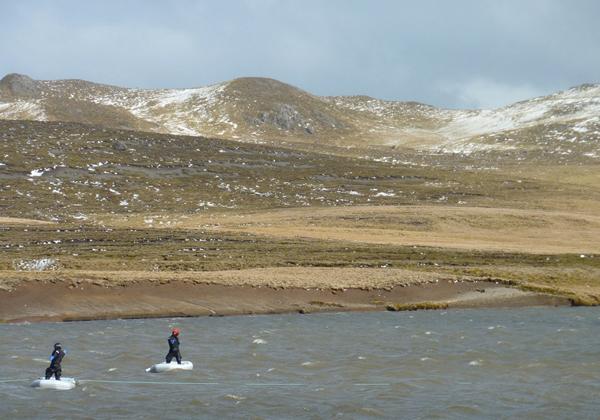ANSTO environmental scientists have alerted the scientific community of the critical need to monitor changes to ice containing potential nuclear fallout that reached Antarctica from 20th century atmospheric weapons testing.
In a Correspondence piece in Nature, Dr Krystyna Saunders and Dr Karina Meredith highlight the need to estimate the potential impact and scale of the possible release of long-lived radionuclides from melting ice sheets.
The two scientists have expertise and capabilities to trace ecosystem change, anthropogenic impacts, and climate change for the region and are contributing to the multi-organisation Australian Research Council Special Research Initiative ‘‘ (SAEF). They suggest that work could be coordinated through national Antarctic research programs and the .
There are stakeholders, including The International Atomic Energy Agency and the Preparatory Commission for the Comprehensive Test Ban Treaty Organisation, who operate monitoring stations in Antarctica, who could assist with coordination efforts.

“We have discussed the implications of this scenario, looked at the minimal literature on the subject, and decided it was time to gather more comprehensive data,” said Dr Meredith, Leader, Environmental research at ANSTO and an expert in groundwater studies.
“Fallout from atmospheric nuclear weapons testing was global, and it is a type of contaminant that hasn’t really been taken into account in previous investigations.
“It’s only relatively recently that people have started acknowledging that little is known about the level of contamination in Antarctica, for example, from , and that it should be looked at. But, as yet, there are no systematic studies documenting and characterising the extent and persistence of toxic radionuclides from atmospheric nuclear weapons testing under changing conditions,” explained Dr Saunders, who has carried out fieldwork in Antarctica and sub-Antarctic islands.
However, researchers in the Northern Hemisphere have found that radioactive isotopes are found in cryoconite, a dark, fine sediment that forms on the surface of glacier, as r in Physics World.
The detonation of nuclear weapons above ground in the 1960s sent radioactive materials as high as 80 kilometres into the atmosphere. Large particles fell to the ground near the explosion sites, but lighter particles and gases travelled into the upper atmosphere. The particles that were swept up into the atmosphere and fell back down to Earth and are known as fallout.
It has been confirmed that Antarctic ice cores preserve a detailed record of nuclear fallout.
This fallout contains the long-lived radioactive isotopes, plutonium-239, plutonium-240 and caesium-137.
The Correspondence piece warns, “As climate change accelerates and the ice melts, these radionuclides will increasingly be released into one of the world’s most pristine ecosystems and potentially into the global marine food web.”
“Large multidisciplinary research projects like SAEF conducted in Antarctica provide the unique opportunity to collect the required information to monitor this in the future” said Dr Meredith.
DOI:








